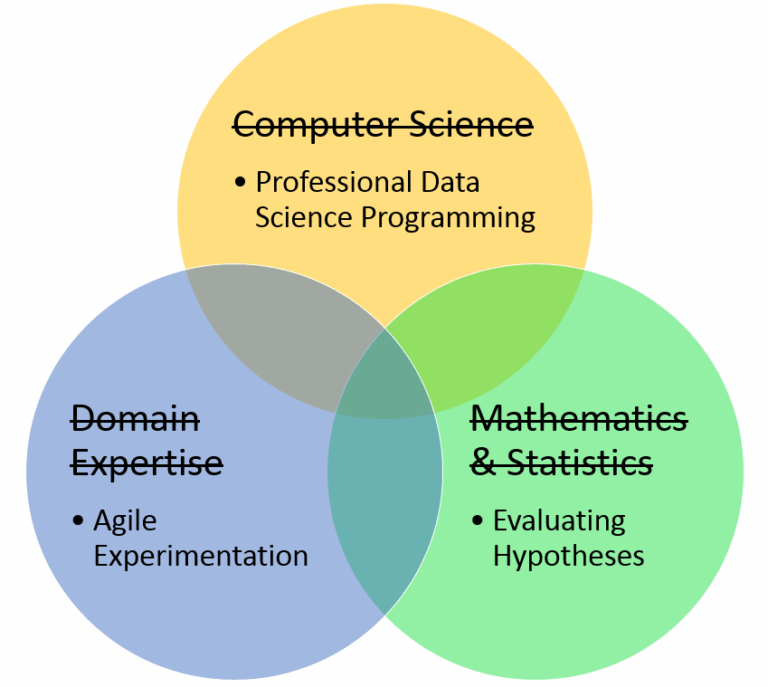
If you’ve browsed tech job boards lately, you’ve probably noticed the titles “Data Scientist” and “Data Analyst” everywhere. They sound similar, share overlapping tools, and often sit side-by-side on the same team.
But are they really the same job with different names? Or is there a meaningful difference?
Let’s clear it up. Whether you’re thinking of entering the data field or hiring for a role, understanding the true difference between a data scientist and a data analyst is essential.
What Do They Actually Do?
The data analyst
A data analyst’s main goal is to make sense of data. They:
- Collect, clean, and explore datasets
- Build dashboards and reports
- Track KPIs and business metrics
- Communicate insights to teams
Think of them as the translators between raw data and business decisions.
The data scientist
A data scientist goes deeper. They often:
- Build predictive models
- Use statistical techniques and machine learning
- Automate decisions and forecasts
- Handle unstructured data (like images or text)
Their work is more technical, more experimental, and usually tied to building automated systems, not just explaining what happened.
Key Differences at a Glance
| Dimension | Data Analyst | Data Scientist |
|---|---|---|
| Main focus | Descriptive and diagnostic analysis | Predictive and prescriptive modeling |
| Tools used | Excel, SQL, Tableau, Power BI | Python, R, SQL, Jupyter, ML libraries |
| Typical questions | “What happened?” “Why did it happen?” | “What will happen?” “How can we improve?” |
| Math level | Moderate (stats, aggregates) | Advanced (ML, algorithms, probability) |
| Deliverables | Dashboards, reports, KPIs | Models, simulations, experiments |
Tools of the Trade
Analysts
- SQL – to query data
- Excel – still used widely
- Tableau / Power BI / Looker – for dashboards
- Google Sheets – for lightweight analysis
- Google Analytics / Mixpanel – product analytics
Scientists
- Python or R – for modeling
- Scikit-learn, XGBoost, TensorFlow – for machine learning
- Jupyter Notebooks – for exploration
- Git – for version control
- Airflow, dbt, MLflow – for pipelines and deployment
While both use SQL, the scientist will almost always go further with code and math.
Overlapping Skills
Despite their differences, both roles share key fundamentals:
- Data cleaning: Analysts and scientists both spend 60–80% of time on this
- SQL querying
- Communication: Data means nothing if you can’t explain it
- Business understanding: Knowing the “why” behind the data is universal
How Their Impact Is Measured
Data analysts drive decisions
They help:
- Product teams know which features are working
- Marketing teams track campaigns
- Finance teams monitor growth or spend
Their work supports daily operations and performance reviews.
Data scientists build systems
They often:
- Develop churn prediction models
- Automate fraud detection
- Create personalized recommendation engines
- Forecast inventory needs
Their work scales—saving time, improving automation, and driving strategic decisions.
Real-World Examples
At an e-commerce company
- Data analyst: Analyzes which product pages convert best, where users drop off, and creates dashboards for the exec team.
- Data scientist: Builds a model to recommend products based on user behavior and optimize pricing using demand forecasting.
At a fintech startup
- Data analyst: Tracks user sign-ups, calculates CAC and LTV, and surfaces retention cohorts.
- Data scientist: Develops a credit scoring model using transaction data and alternative data signals.
Career Paths and Salaries
Entry-level salary (varies by region)
- Data Analyst: $60k–$90k
- Data Scientist: $85k–$130k+
Career progression
| Data Analyst Path | Data Scientist Path |
|---|---|
| → Senior Analyst | → ML Engineer |
| → Analytics Lead | → AI Specialist |
| → Product Analyst | → Research Scientist |
| → Data Product Manager | → Chief Data Scientist |
Some analysts eventually grow into data scientists as they build stronger coding and modeling skills.
Which Role Is Right for You?
Choose Data Analyst if:
- You enjoy exploring patterns and telling stories with data
- You’re comfortable in Excel and SQL
- You want to work closely with business teams
- You prefer dashboards and insights over building systems
Choose Data Scientist if:
- You love algorithms, stats, and experimentation
- You’re comfortable coding
- You want to automate decision-making
- You enjoy solving deeper predictive problems
The Future: Are the Roles Merging?
In some startups, one person does both jobs—especially in “full-stack” data roles.
But in larger organizations, the roles are increasingly specialized. Data scientists might not touch dashboards. Analysts might never train a model.
That said, hybrid titles like:
- Analytics Engineer
- Data Science Analyst
- Product Data Scientist
… are emerging, blending skills from both sides.
Final Thoughts
You don’t have to choose forever. Many professionals start as analysts, then grow into scientists. Others stay in analytics and become invaluable strategic thinkers.
What matters most is not the title, but the problems you want to solve and the tools you’re excited to learn.
At the end of the day, both roles serve the same mission: turning raw data into smarter decisions.






